When we showed you the big backyard reveal a few weeks ago, there was one angle we didn’t show.
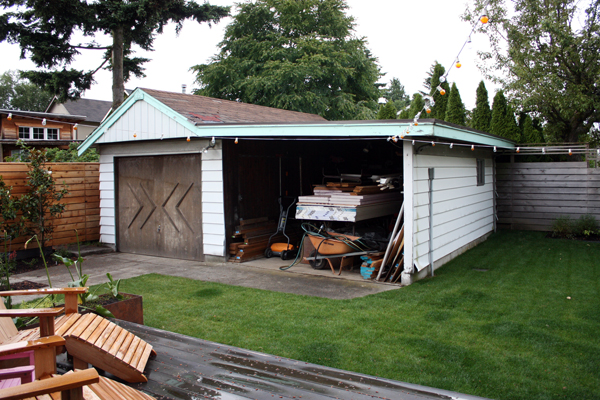
Yeaaaah. Surprise, the garage/carport is still there and in exactly the same condition as when we moved in 7 years ago (although I’m convinced the new landscaping makes it look even worse). The reason for its lack of improvement is two-fold. For starters, the structure has basically served as a shop and lumber storage since day one. Secondly, we’ve been unsure of what to do with it once we’re done remodeling. The gabled portion is the original garage from 1910. Sometime in the ’60s the carport was added and everything was clad in metal siding and teal trim (why? why???). The building is generous by Seattle standards (about 515 SF) and we know it’s valuable to have what is effectively a 2-car garage in the city. But it’s ugly and not that functional for our post-remodel needs. So, we’ve been brainstorming:
Ax the carport and fix up the original garage: This would certainly make our yard feel bigger and we don’t necessarily need the carport space. However, we’re happy with the size of our current yard and don’t think it would be a great trade-off in terms of home value. The building is also an existing non-conforming structure so if we were to tear it down we couldn’t rebuild in the same spot.
Add a second story: Seattle now allows Detached Accessory Dwelling Units (DADUs) in our part of the city, which means we could basically have a small house in our backyard (with a size limit of 800 SF). The idea of having rental income each month is appealing, but in reality we’re not sure we like the idea of someone living in our backyard. Adding a second story introduces new complications as well – the second story might have to step back on the north side to abide by zoning code setback rules, which would create a fussy structural situation. We’d also have to run plumbing to the structure which would not only mean tearing up our yard but also potentially increasing the size of our water main. Of course, having a small house just for guests would be amazing, but probably not financially viable.
Remodel the existing structure: We always thought this option might be a good compromise but couldn’t decide what to do with the wacky gable-shed roof form. The roofing material needs replacement and there’s not a functional reason to keep the existing roof structure. We tried a single gabled roof over the whole thing but it looked way too out of scale. Then, a few weeks ago Kyle came up with the idea to just eliminate the gable and extend the slightly sloped carport roof structure, taking it from this:
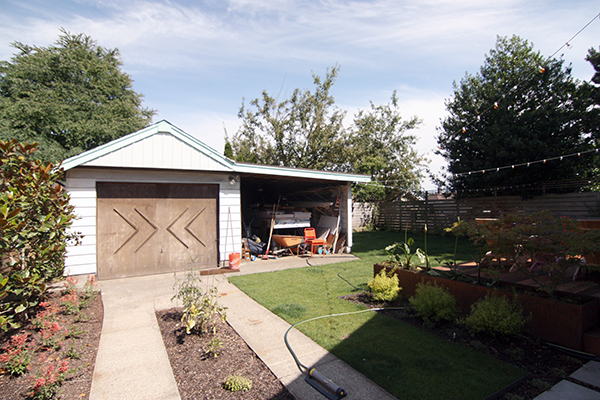
To something like this:
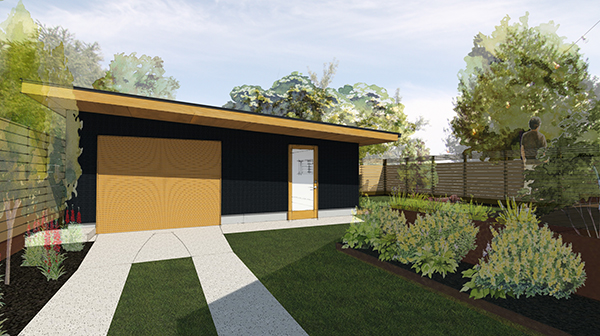
Functionally, we discussed how we’d use the space and decided that the best solution is to maintain the two zones. The existing garage would stay a shop and the carport would become a multipurpose work space with plenty of storage in both. There is already a concrete curb and framed wall between the two so this division makes sense. The layout would be flexible so that we or future owners could use it for a number of different things. (We’d also like to include a few kid-friendly features.)
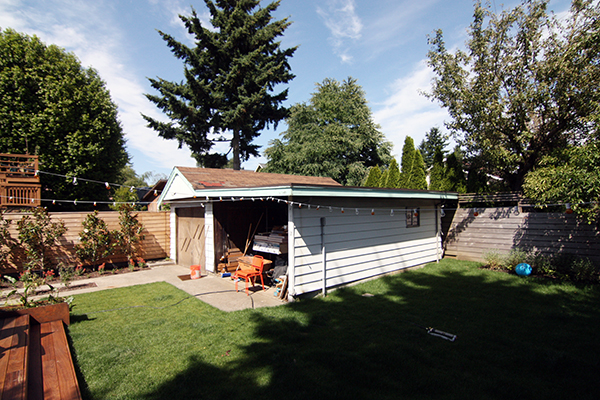

In addition to changing the roof structure, we’d fill in the carport and add a swing door. We’d replace the metal siding with dark-stained cedar siding (applied as a rainscreen) with a durable finish and add a few small windows to the south side. Aesthetically, our approach would be to create a building that compliments the house but does not necessarily match it. This would also be an opportunity to do something more modern than what the exterior of the main house allowed.
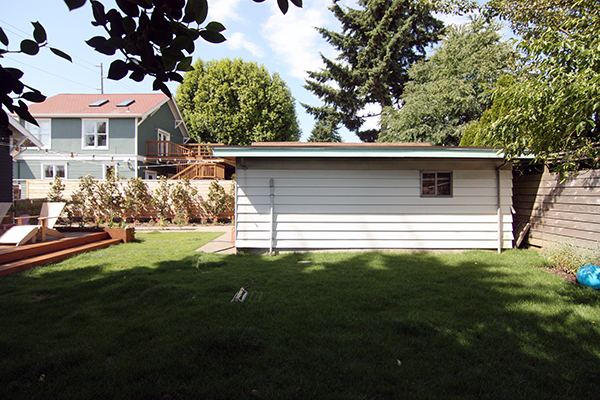
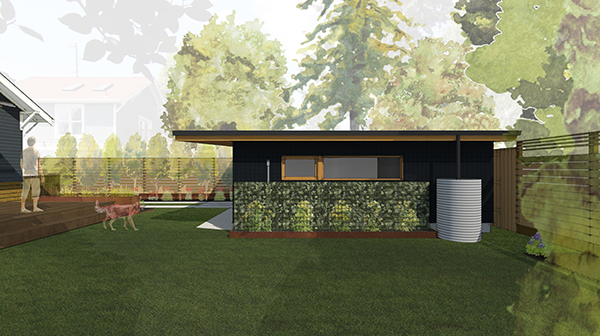
On the south side, we have the idea to collect roof run-off in a cistern that would then feed a raised vegetable garden (with maybe a hog wire trellis attached to the building with standoffs). The roof itself would need to be metal for such a low-slope. The fascia and trim would be cedar and the soffit probably a exterior-rated plywood.
Aside from creating a functional and well-designed space, we also want this project to be one that is done on a modest budget. We don’t plan on starting work this year (still need to finish the basement!), but it’s exciting to go through the design process and come up with a direction that we feel good about. We’re not 100% settled on the form or the material palette either. I’m sure we’ll make a few modifications and revisions as we go, but this is what we’ve got for now. Teal trim, your days are numbered.